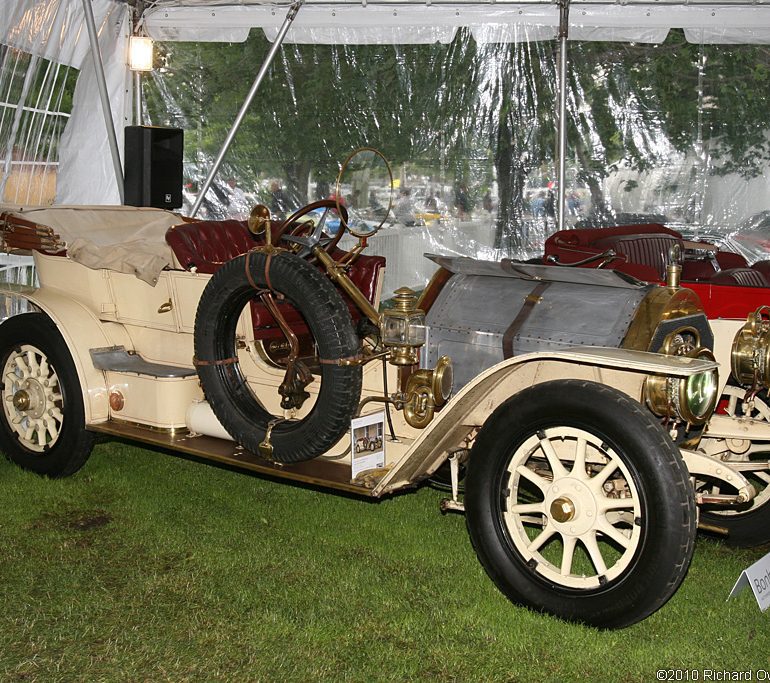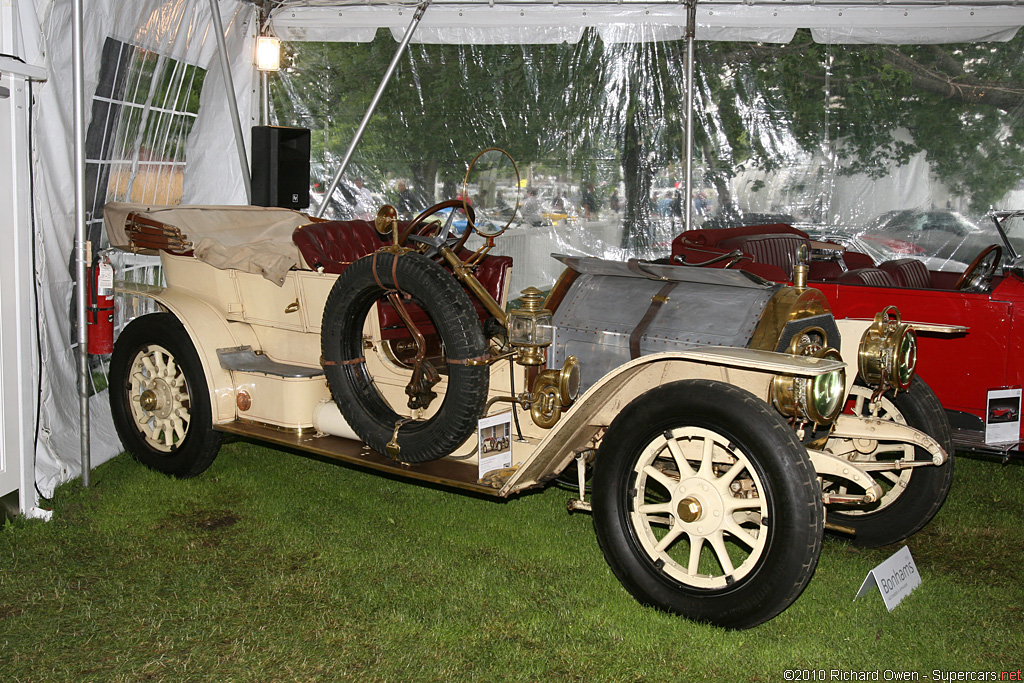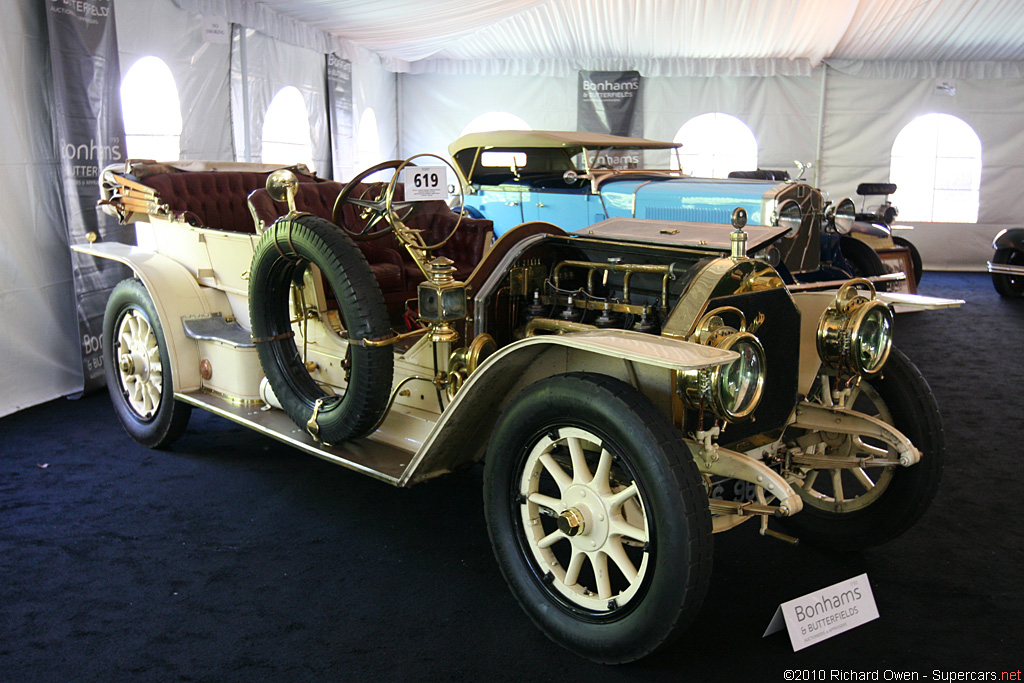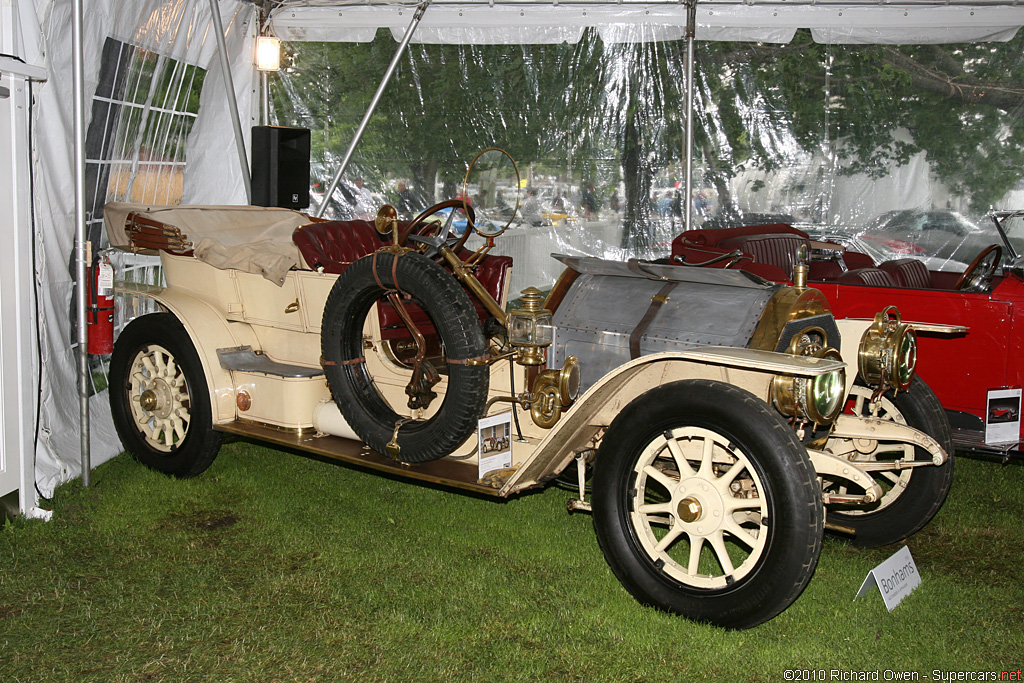1908 Thomas Flyer Model F
Replacing the Model 35 of 1907, Thomas launched their 1908 model with both six and four cylinder engines.
Powering the 1908 model were large-bore engines that were similar to the units first revealed by E.R. Thomas in 1905. A cross-flow, T-head design with indivudual cylinder castings was similar to the Mercedes and Panhard of the period. The 1908 model used a new dual-chain drive line system. Some cars used the Atwater Kent Manufacturing Company ignition system.
In Detail
| type | Series Production Car |
| built at | Buffalo, New York., USA |
Auction Sales History
1908 Thomas Flyer Model F 4-60hp Tourer – sold for $733,000
The present custodians of the Thomas have always maintained that old cars are to be used rather than looked at, and for this reason the car received a generous amount of attention to ensure that it would provide the ultimate road tour car. In the mid-1990s during an engine rebuild, this necessitated casting of one replacement cylinder jug, and as a concession to advancing years and 2000s driving conditions a modern clutch was fitted. The patterns, a spare jug and the original clutch are with the car. Similarly, to obviate turning over the enormously powerful 60hp engine a starter motor is fitted. It is fair to say that whenever attention has been required, it was carried out, although no attempt was made to restore the car in its entirety and today it wears a pleasing patina that confirms the car has been used and enjoyed to its fullest capabilities.
In addition for a heavy touring schedule, which has included use on the arduous Scottish tour, full weather equipment was re-made, with additional full length side curtains and a front windshield. For lighter days, a ‘monocle’ windshield can be used.
Few cars of this era have such impeccable documented history from new. Even fewer great cars were kept by their original owners for so long. Fewer still made the transition from new car to the birth of the antique car hobby while still in their original owners’ care. This car has been cherished since new because its significance has been recognized the whole time. Not only is this fantastic car as good as anything made in the world at the time, but it is also a tangible historical marker of a major turning point in the history of the American car. E.R. Thomas and this model in particular turned the tide of the industry away from Europe and laid the ground work for the American auto industry’s supremacy to come. Mr. Carpenter clearly felt this way about his Thomas. Decades after his Mercedes were scrapped and forgotten, his Thomas Flyer, with the pride and significance it held, was still in his care.
Auction Source: Bonhams 2010 Exceptional Motorcars and Automobilia
1908 Thomas Flyer Model F 4-60 Tourer – sold for $51,480
The Aston Martin Heritage Trust through Piers Loxton-Edwards have kindly provided copies of the early factory records for this car which confirm it to have been fitted with the Standard Touring bodywork that it still wears today and this was finished in black and trimmed in green upholstery. Their ownership records state it to have been sold to G.E. Layte & Co. Ltd. and then through Masons Garage on London’s Maddox Street, W1. A new owner, Mrs McDougall of Ashford in Kent was noted on April 3rd 1939, though no further notes of ownership are listed. The car was serviced by the works up to the war and from 1946 through to 1954, suggesting that it remained with Mrs. McDougall throughout this time. On file is an old green log book confirming that the previous owner of the Aston purchased it in the early 1960s, whether this was from Mrs. McDougall is not known. The present Aston Martin Enthusiast owner acquired the car in 2008 thinking it would be a perfect foil to his post-war cars, but on reflection has decided not to pursue the restoration and so offers it now for sale.
In the course of the previous ownership of forty years the car underwent some restoration over time, while continuing to be used. A few invoices attest to this, the interior was re-done in red fabric in 1970 and the car repainted to its present green, while the engine had its cams rebuilt, and more substantial engine work was completed in the mid-1980s and followed up a few years ago. However, from its condition today, the car does not have the appearance of ever having been totally dismantled quite simply because it is too complete! Aesthetically, the green paint is starting to flake in places, revealing what must be the original black and some aluminum oxidizing, while the engine bay and chassis show some surface corrosion. The trunk lid is designed to carry side curtain panels, some of which are still in place and clearly have never been replaced. Of particular note is the fact that all dashboard instrumentation remains in place, as well as a St. Christopher badge for suppliers.
Unusually for a car that might well be considered cosmetically as ‘barn fresh,’ the Aston is ‘on the button’ and on inspection started promptly and could be maneuvered with ease although it was not driven any distance. This honest and complete ‘matched numbers’ example offers the possibility of preservation or restoration, supported by an uncomplicated history, at a time when pre-war Aston Martins are an increasingly popular commodity.
Auction Source: 2010 Greenwich Collectors’ Motorcars and Automobilia Auction by Bonhams







